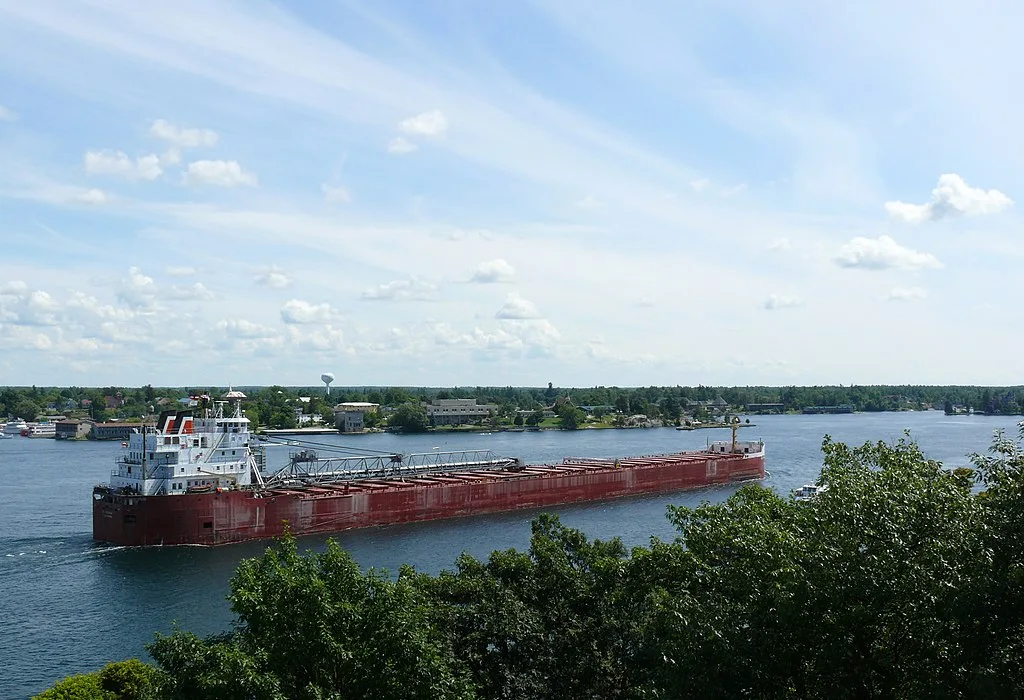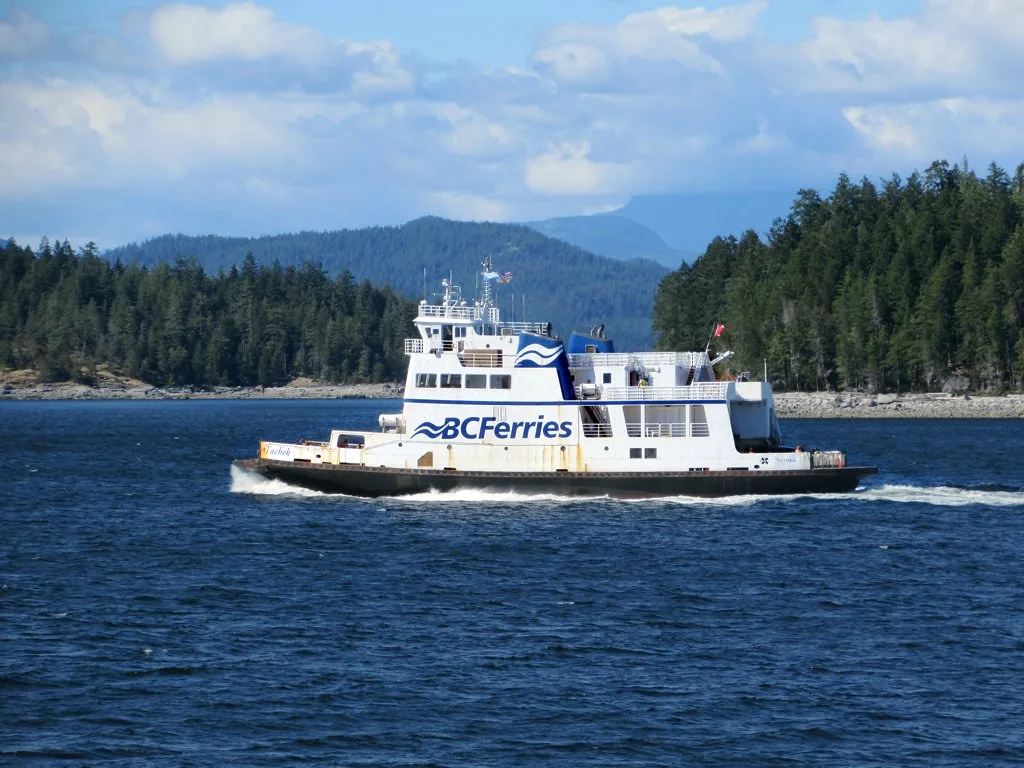Have you ever wondered how a country as vast and diverse as Canada stays connected? From bustling urban centers to remote rural areas, the secret lies in its complex and efficient transportation network.
Imagine traveling from the Atlantic Ocean to the Pacific, crossing breathtaking landscapes on a well-maintained highway. Or picture yourself on a scenic train journey through the Rocky Mountains, marveling at nature’s grandeur. Canada’s transportation system makes these experiences possible and much more.
Whether you’re a frequent traveler, a logistics enthusiast, or simply curious about how things move, this article will provide you with a comprehensive look at Canada’s transportation network. You’ll learn about the highways that link cities, the railways that carry goods, the airways that connect remote areas, and the maritime routes that support international trade.
Ready to embark on this informative journey?
An Overview of Canada’s Transportation Network
Highways and Roads
Roads are the main routes that connect people across Canada. The road network includes everything from highways to city streets and rural roads. The Trans-Canada Highway is the most famous, stretching over 7,800 kilometers from the Atlantic Ocean to the Pacific Ocean. It links major cities like Vancouver, Calgary, Winnipeg, Toronto, Montreal, and Halifax, making it essential for travel and transporting goods.

Author : Zeitlupe – wikimedia.org
In cities, local roads help people get to work, school, and other places they need to go. In rural areas, roads connect small towns and farms to larger markets and cities. Trucks use these roads to deliver goods such as groceries, building materials, and more. Road transport is crucial for daily life and business.
Railways
Railways are key for moving large quantities of goods over long distances. Canada has two major railway companies, Canadian National Railway (CN) and Canadian Pacific Railway (CP). They operate extensive rail networks that carry products like grain, coal, and oil across the country. Rail transport is efficient for heavy and bulky items.
Passenger trains are also important. VIA Rail offers comfortable and scenic travel between major cities. For example, the train route from Toronto to Vancouver offers beautiful views, including the Rocky Mountains. Trains help reduce road traffic and are often more environmentally friendly.
Air Transport
Air transport is vital for Canada due to its large size. Major airports in cities like Toronto, Vancouver, and Montreal serve as hubs for flights within Canada and to other countries. Air Canada is the largest airline, but many smaller regional airlines also operate. These airlines are crucial for connecting remote northern areas where other transport options are limited.
Air transport is not only for passengers. Cargo planes move goods quickly across the country and around the world. This is especially important for urgent deliveries like fresh food and medical supplies. Air transport ensures that even the most remote communities receive essential goods.
Maritime Transport
With coastlines on three oceans, maritime transport is essential for Canada. Major ports like the Port of Vancouver and the Port of Montreal handle much of the country’s international trade. Ships bring in products like cars, machinery, and consumer goods and send Canadian products abroad.
Inland waterways also play a crucial role. The St. Lawrence Seaway and the Great Lakes allow ships to travel deep into North America, which is important for trade with the United States. Maritime transport is often the most cost-effective way to move large quantities of goods over long distances.

Author : Ad Meskens – wikimedia.org
Unified Transport Network
Canada’s transportation network is diverse and vital for connecting its vast and varied regions. Each mode of transport—road, rail, air, and maritime—has its strengths and unique role in keeping the country moving. Together, they ensure that people and goods can travel efficiently, supporting the economy and daily life in this expansive nation.
Exploring Canada’s Train Services
Comfortable Travel: Passenger Trains
Passenger trains are an important part of getting around in Canada. VIA Rail is the main company that runs these trains, connecting big cities and regions. Traveling by train is a comfortable and scenic way to go. For example, the trip from Toronto to Vancouver is famous for its beautiful views of the Rocky Mountains and other landscapes.
Riding a train has many benefits. You can relax in roomy seats, enjoy meals in dining cars, and watch the scenery through large windows. Trains also give you a chance to meet and chat with other travelers. For many people, train travel is more enjoyable and less stressful than driving or flying.
Scenic Journeys: Tourist Trains
Canada is famous for its stunning natural beauty, and some train routes are made to show it off. Tourist trains take you on special trips through the country’s most beautiful spots. The Rocky Mountaineer is a luxury train that travels through the Canadian Rockies. It offers panoramic views, gourmet meals, and top-notch service.
Another popular tourist train is the Agawa Canyon Tour Train in Ontario. This train takes you through rugged wilderness, which is especially beautiful in the fall when the leaves change color. These tourist trains are more than just transportation—they’re a memorable experience.
Essential Goods: Freight Trains
While passenger trains are great for people, freight trains are vital for the economy. Canada’s main freight rail companies, Canadian National Railway (CN) and Canadian Pacific Railway (CP), run extensive networks. They transport goods like grain, minerals, oil, and manufactured items across the country and to international markets.
Freight trains are very efficient for moving large amounts of goods over long distances. They help reduce road traffic and have lower greenhouse gas emissions compared to trucks. Rail transport is especially important for Canada’s natural resource industries, as it allows bulk items to be shipped from remote areas to ports and markets.
Connecting Remote Areas: Community Trains
Train services are crucial for linking remote and northern communities, which often have limited access to other transportation. VIA Rail operates routes that serve these remote regions, ensuring that people can travel and receive necessary supplies.
For example, the train to Churchill, Manitoba, is an important connection for this northern town, which is otherwise only accessible by air or sea. This service supports the local economy and helps residents access goods and services from other parts of Canada.
Canada’s Ferries and Coastal Services
Essential Role of Ferries
Ferries are a crucial part of Canada’s transport network, especially for coastal regions and islands. They connect people to the mainland, allowing them to travel for work, education, and leisure. Ferries also transport goods, boosting local economies and supporting tourism.
Canada has an extensive network of ferries operating along its coastlines, across rivers, and on lakes. These services are vital for communities without road or rail access, reducing travel times and providing convenient transport for residents and visitors.
Major Ferry Operators
Several major companies operate ferry services in Canada. BC Ferries, one of the largest in the world, serves British Columbia’s coast. With over 35 vessels, BC Ferries connects the mainland with Vancouver Island, the Gulf Islands, and northern and central coastal areas.
Marine Atlantic provides important links between Newfoundland and Labrador and the mainland. Operating year-round, Marine Atlantic ensures that people and goods can move despite harsh weather conditions.
In Quebec, the Société des traversiers du Québec (STQ) runs numerous ferry routes across the St. Lawrence River. These services are essential for residents and businesses, offering reliable transport across the river.
Bay Ferries operates in the Maritimes, with routes including the ferry service between Nova Scotia and New Brunswick and the seasonal high-speed ferry between Nova Scotia and Maine in the United States. These routes are vital for tourism and local economies.
Types of Ferries
Different types of ferries are used in Canada to meet various needs. Passenger ferries carry people and their vehicles, offering comfortable seating, dining options, and other amenities. These ferries are common on busy routes, such as those run by BC Ferries.
Vehicle ferries transport cars, trucks, and other vehicles, making them crucial for moving goods and services. They often have large decks and special loading ramps for heavy and oversized vehicles. Marine Atlantic’s ferries are a prime example, carrying a significant amount of freight between Newfoundland and the mainland.
Smaller ferries, such as river ferries and cable ferries, connect communities separated by rivers or narrow water bodies. These ferries are essential for daily commuting and local transport, providing vital links for residents and businesses.

Author: David Stanley – flickr.com
Challenges and Innovations
Operating ferry services in Canada comes with challenges. Harsh weather, especially in winter, can disrupt services and make navigation difficult. Ice, high winds, and rough seas pose significant risks. Operators must invest in well-maintained vessels and advanced navigation systems to ensure safety and reliability.
Maintaining aging infrastructure of ferry terminals and vessels is another challenge. Upgrading and replacing old equipment requires significant investment, which can be a burden for operators, particularly those serving smaller communities with limited funding.
Despite these challenges, there have been innovations in ferry services to improve efficiency and sustainability. Many operators are investing in greener technologies, such as hybrid and electric ferries, to reduce their environmental impact. BC Ferries, for example, has introduced hybrid-electric vessels as part of its fleet modernization efforts.
Innovations in booking systems and customer service have also enhanced the passenger experience. Online booking platforms, real-time updates on ferry schedules, and improved onboard amenities contribute to a more convenient and enjoyable journey for passengers.
Public Transit Systems in Canadian Cities
- The Role of Public Transit: Public transit is crucial for daily life in Canadian cities. It provides an easy and affordable way for people to get to work, school, and other places. Public transit helps reduce traffic, lowers pollution, and makes cities more livable. Each major city in Canada has its own unique public transit system to meet its needs.
- Toronto’s TTC: The Toronto Transit Commission (TTC) is the largest public transit system in Canada. It operates buses, streetcars, and subways across Toronto. The TTC’s subway system has four lines: Line 1 (Yonge-University), Line 2 (Bloor-Danforth), Line 3 (Scarborough), and Line 4 (Sheppard). These lines cover the main areas of the city and connect with buses and streetcars for a complete network.
Streetcars are a unique feature of Toronto’s transit system. They run on tracks in the streets and offer a scenic way to travel. The TTC’s bus network includes over 140 routes, making sure that even the farthest parts of the city are accessible. The Presto card system makes paying for transit easy, allowing passengers to use one card for buses, subways, and streetcars.
- Vancouver’s TransLink: TransLink serves Metro Vancouver with buses, SkyTrain, SeaBus, and West Coast Express services. The SkyTrain is Vancouver’s rapid transit system, with three lines: the Expo Line, Millennium Line, and Canada Line. These lines provide fast, reliable service, connecting downtown Vancouver with suburbs like Burnaby, Richmond, and Surrey.
The SeaBus is a passenger ferry that links downtown Vancouver with North Vancouver. It offers a quick and scenic ride across Burrard Inlet. The West Coast Express is a commuter train that runs from downtown Vancouver to the eastern suburbs, providing a comfortable option for daily commuters. TransLink also has a wide bus network covering the entire Metro Vancouver area.
- Montreal’s STM: The Société de transport de Montréal (STM) runs Montreal’s public transit system, which includes buses and the metro. The Montreal Metro has four lines: Line 1 (Green), Line 2 (Orange), Line 4 (Yellow), and Line 5 (Blue). The metro is known for its clean, efficient service, with trains running frequently throughout the day.
Montreal’s bus network is extensive, with over 200 routes covering the island of Montreal and surrounding areas. The STM also offers a night bus service, ensuring public transit is available at all hours. The Opus card system allows passengers to use one card for both the metro and buses, making transit convenient and accessible.
- Calgary Transit’s CTrain: Calgary Transit operates the city’s public transit system, including buses and the CTrain light rail. The CTrain has two lines: the Red Line and the Blue Line. These lines cover key areas of the city, including downtown, and connect to the bus network for easy transfers.
Calgary Transit’s bus network includes over 160 routes, ensuring full coverage of the city. The MyFare app and Transit app provide real-time updates and make it easy to plan trips and pay fares. Calgary Transit also offers a range of services to support accessibility, ensuring public transit is available to all residents.
Conclusion
Canada’s extensive and diverse transportation network integrates highways, railways, airways, and maritime routes to ensure nationwide connectivity. The iconic Trans-Canada Highway stretches over 7,800 kilometers, linking major cities from coast to coast, facilitating both travel and trade. Rail services, including VIA Rail for passengers and Canadian National (CN) and Canadian Pacific (CP) for freight, are vital for efficient long-distance transport of people and goods. Air transport is crucial for reaching remote regions and handling time-sensitive cargo, with major hubs in Toronto, Vancouver, and Montreal. Ferry services are indispensable for coastal and island communities, providing essential links for residents, tourists, and freight.
FAQs
What is the Trans-Canada Highway?
The Trans-Canada Highway is a major highway that stretches over 7,800 kilometers from the Atlantic Ocean to the Pacific Ocean, linking major cities like Vancouver, Calgary, Winnipeg, Toronto, Montreal, and Halifax.
Which companies operate Canada’s major railways?
Canada’s major railway companies are Canadian National Railway (CN) and Canadian Pacific Railway (CP). These companies operate extensive rail networks for both freight and passenger services.
Why is air transport important in Canada?
Air transport is vital in Canada due to the country’s large size and remote regions. Major airports in cities like Toronto, Vancouver, and Montreal serve as hubs for domestic and international flights, and regional airlines connect remote northern areas.
What role do ferries play in Canada’s transportation network?
Ferries are crucial for connecting coastal regions and islands to the mainland. They transport passengers, vehicles, and goods, supporting local economies and tourism, especially in areas without road or rail access.
How does rail transport benefit Canada’s economy?
Rail transport is efficient for moving large quantities of goods over long distances, reducing road traffic and greenhouse gas emissions. It is especially important for transporting bulk items like grain, minerals, and oil from remote areas to ports and markets.